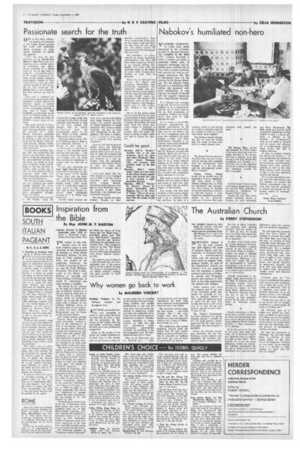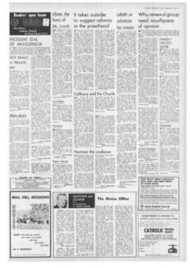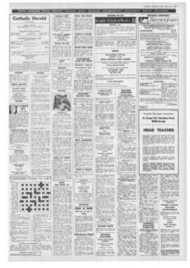Page 6, 5th September 1969
Page 6

Report an error
Noticed an error on this page?If you've noticed an error in this article please click here to report it.
Tags
Share
Related articles
The Latest Books, By Fr. W. J. Randall
A Common Bible?
Mgr. J. Barton, F.s.a.
Religious Books By Henry St. John, 0.p.
Clarity And Charity In Tv Bible Talk
Inspiration from the Bible
By Mgr. JOHN M. T. BARTON
Catholic Theories of Biblical Inspiration since 1810 by James T. Burtchaell (Cambridge University Press 70s.) THE author of this substantial work of over three hundred pages is now chairman of the department of theology at Notre Dame University, Indiana. He was born in 1934. ordained in 1960, and studied at the Gregorian University, the Catholic University of America, and the .gcole Biblique, Jerusalem. The book is dedicated to the Master and Fellows of Gonville and Caius College, Cambridge, of which Fr. Durtchaell was most recently a member.
The period he has selected for his study of Catholic writings on Biblical inspiration is one of which he writes that it "washed over by several successive waves of theological revival" (p. 3), and the survey opens with a chapter on the Catholic Tubingen school in the early years of last century. in which von Drey, Mettler, Staudenmaier, and von Kuhn are the principal figures.
The second chapter entitled "Theories Dead and Buried" makes interesting reading in spite of the obsolescence of most of the theories then regnant, among which Newman's writings on inspiration are still widely read and studied The appearance in 1953 of Pere Jaak Seynaeve's Cardinal Newman's Doctrine on Holy Scripture brought in its train some other works on the same topic.
The theory of content inspiration, so largely associated with the Fathers of the Society of Jesus, and in particular with the great Cardinal Johann Baptist Franzelin, has rightly a chapter to itself. and emphasis is laid upon "the burden of Franzelin's argument . . . that the dogma of inspiration must be derived from the dogmatic statement of God's authorship" (p. 99), which was echoed by Leo XIII, 23 years after Franzelin's masterpiece appeared, in the encyclical Providentis
ed., n. 3293). in spite of its former popularity, this theory was "superseded by stronger systems that were assembled in the last decade of the 19th century" (p. 120).
The teaching on verbal inspiration (ch. 4) introduces many great names, but none more significant than that of Pere Marie-Joseph Lagrange, 0.P., who "revised and amplified his inspiration theory as he went along" (p. 139). Admittedly, however, Lagrange wrote little about inspiration in his later years, and other familiar names are associated with the theory.
The remaining chapters on "Inspiration without Inerrancy"
(in which the names of Lord Acton and von Hugel have a prominent place), and "The Last Half-Century" introduce many theorists and theories. and cannot be adequately summarised here. The conclusion seems to be that "The Benoit position rises as the classic theory of the years immediately after Divino Afflartre Spirint" (p 245).
The author's own Critique is a well-informed, but not over optimistic view of the present debate on the inspired writings. The book is recommended, if not wholly essential, reading, and gives promise of much more to come.
blog comments powered by Disqus









